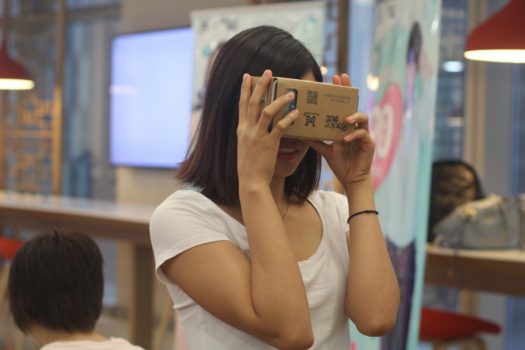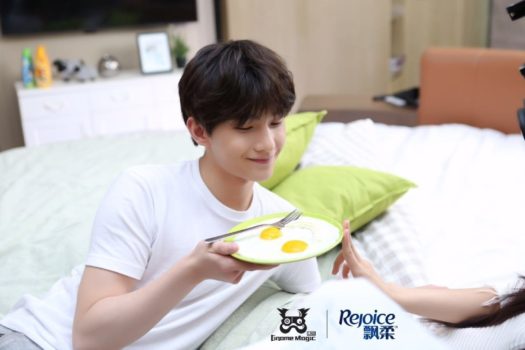Press release: “Web Valentine’s Day” – P&G and Alibaba Refresh VR Shopping Experience
BEIJING — P&G China and Alibaba VR Lab jointly launched the “VR Boy Friend” and “VR Girl Friend” marketing campaign on May 20, “Web Valentine’s Day,” the Chinese online version of the holiday, using VR technology on Alibaba’s Taobao app.
By donning their VR equipment and clicking the link, fans of popular young Chinese actors Yang Yang and Dilireba can make their idols wake from their sleep, make them breakfast, and even propose to them, all through VR technology.
It gives the fans a chance to experience a whole new depth of feeling for their idols. And this is not the end, their idols shopped with them for P&G Rejoice products, which were easily added to their carts or followed through a click. According to P&G and Alibaba VR Lab, this is the first time for e-commerce companies and brands to jointly apply VR technology commercially in this way.

The creative “VR + idol + shopping” marketing campaign creates a new model for content and technology integration, taking VR out of the realm of pure technology and turning it into a communication tool that can help companies engage with consumers on a more personal level and create a rewarding shopping experience.
Creating an “experience” has become ever more important to communication and marketing in the Internet era. Consumers are looking for something beyond the traditional advertising methods, they want something creative and engaging. The constantly evolving digital technology has sped up innovation in brand marketing. Being at the cutting edge of technology, 3D virtual visualization stimulates consumers’ sensory experience and recreates the real-life activity, taking them into “the store”. This makes the experience valuable in itself, and may even become a new form of commodity in the future.

VR-type technology and the form of interaction it enables have become popular with younger generations as a new way of communication, and this in turn has attracted the attention of increasing numbers of merchants and e-commerce platforms. P&G and Alibaba have previously worked together to explore this new area, with the “Dimension Door” campaign in April. It adopted augmented reality technology to delight consumers with a guided virtual shopping tour through five countries via the Alibaba T-Mall P&G International Flagship Store.
Alibaba, the world’s biggest e-commerce platform, recently announced its strategic into the integration of VR technology and E-commerce, promoting quality VR content creation through the “Buy+” program and VR hardware through its VR lab, GnomeMagic Lab. It will be testing the potential of this initiative with a view to integrating it into online shopping as a valuable consumer support.
The development of e-commerce in China has moved forward at a stunning pace in recent years. It has more than 400 million active users and trade volume is RMB 3,828.5 billion (US $0.58 billion), representing year-on-year growth of 35.7Â percent. With such globally significant economic volumes, Chinese e-commerce is a key area for companies committed to offering a better shopping experience for consumers.
- Major companies to discuss metaverse plans at December conference - August 22, 2023
- OpenSim Community Conference starts today - December 11, 2021
- Ninth Annual OpenSimulator Community Conference set for December - October 18, 2021
